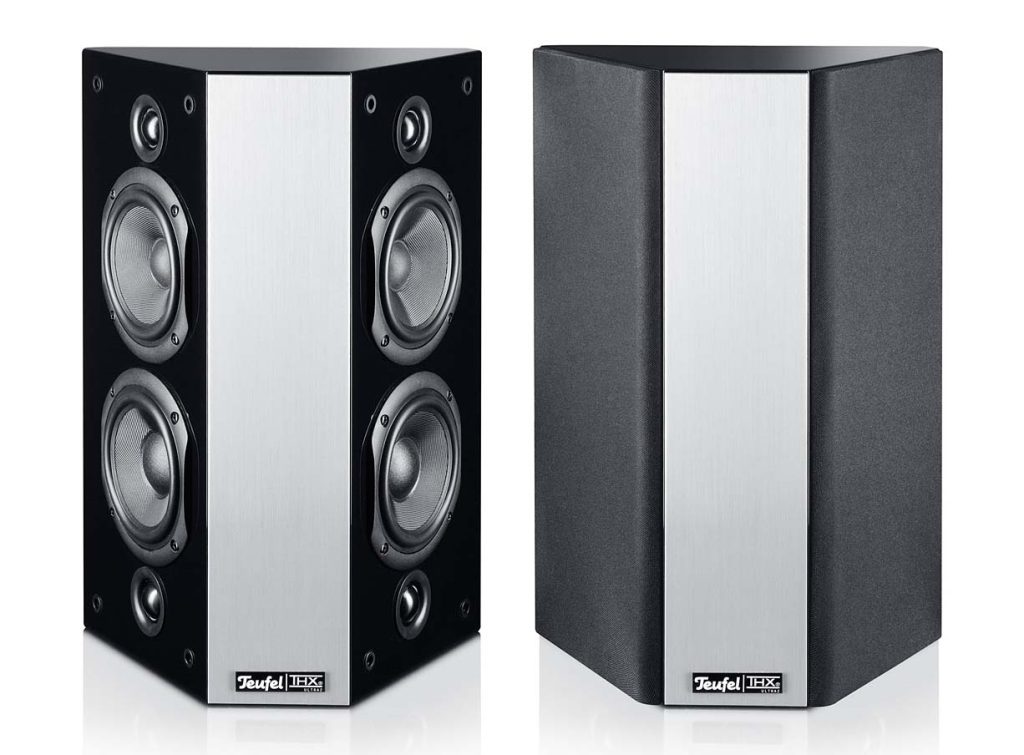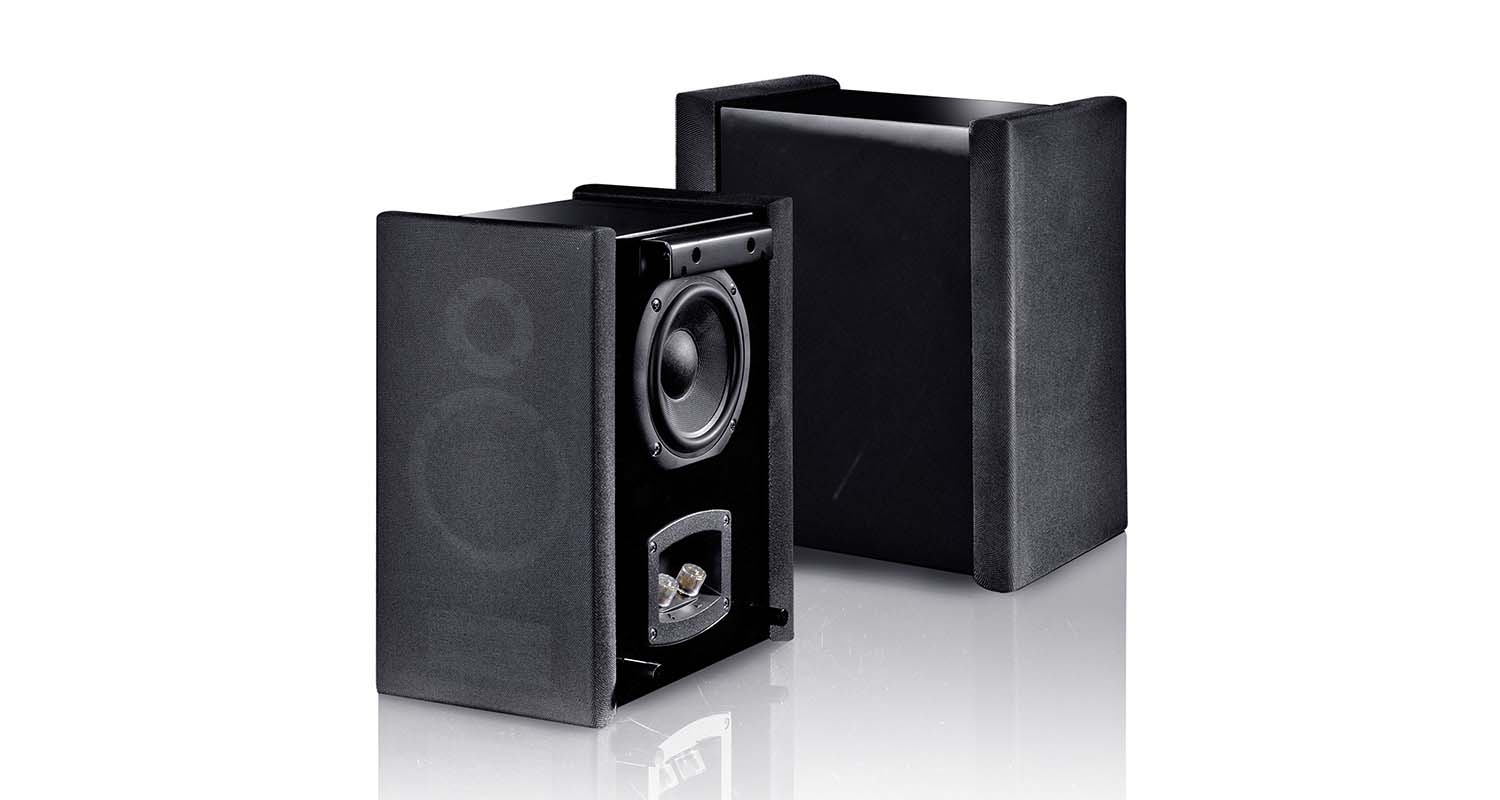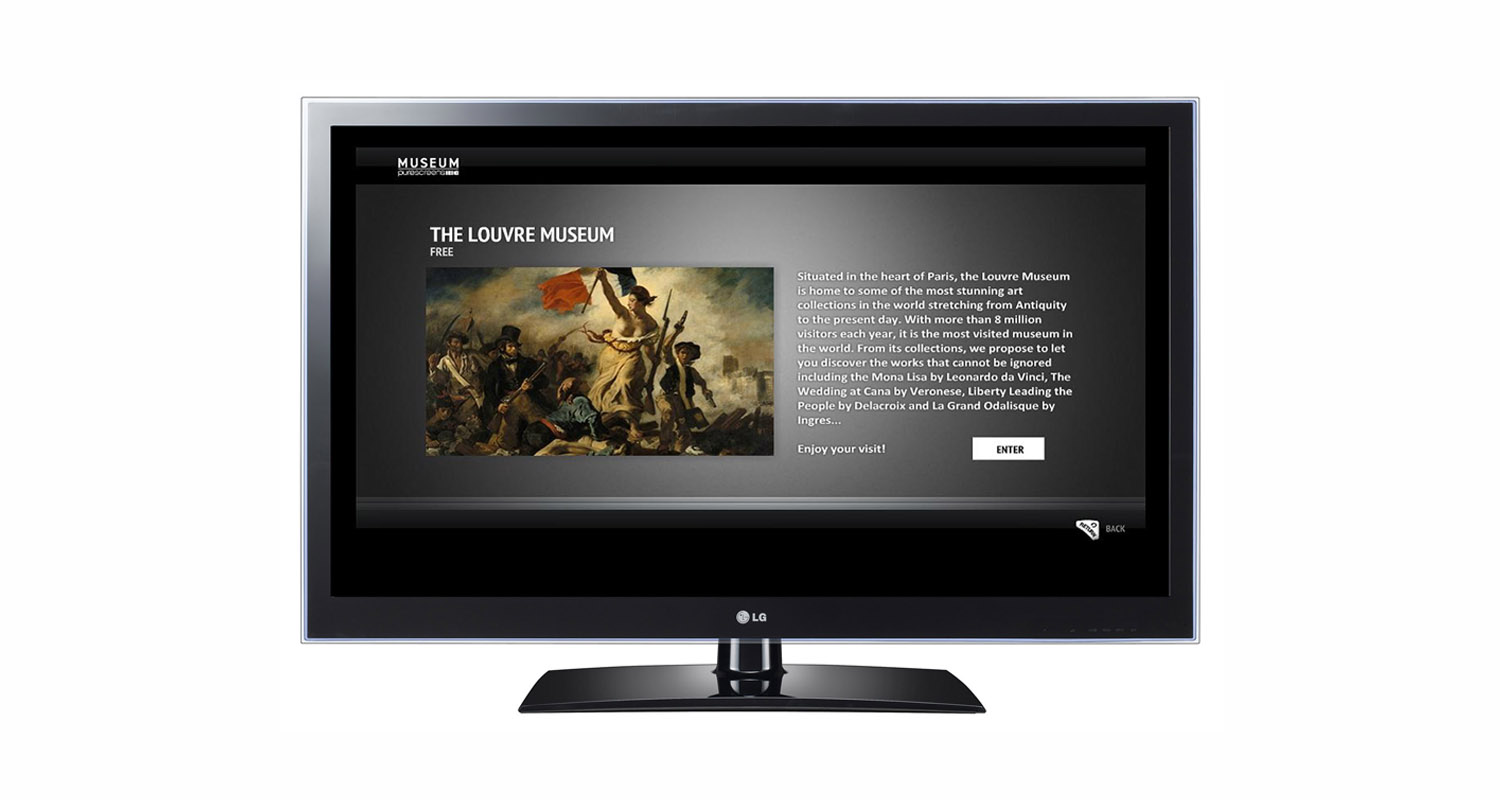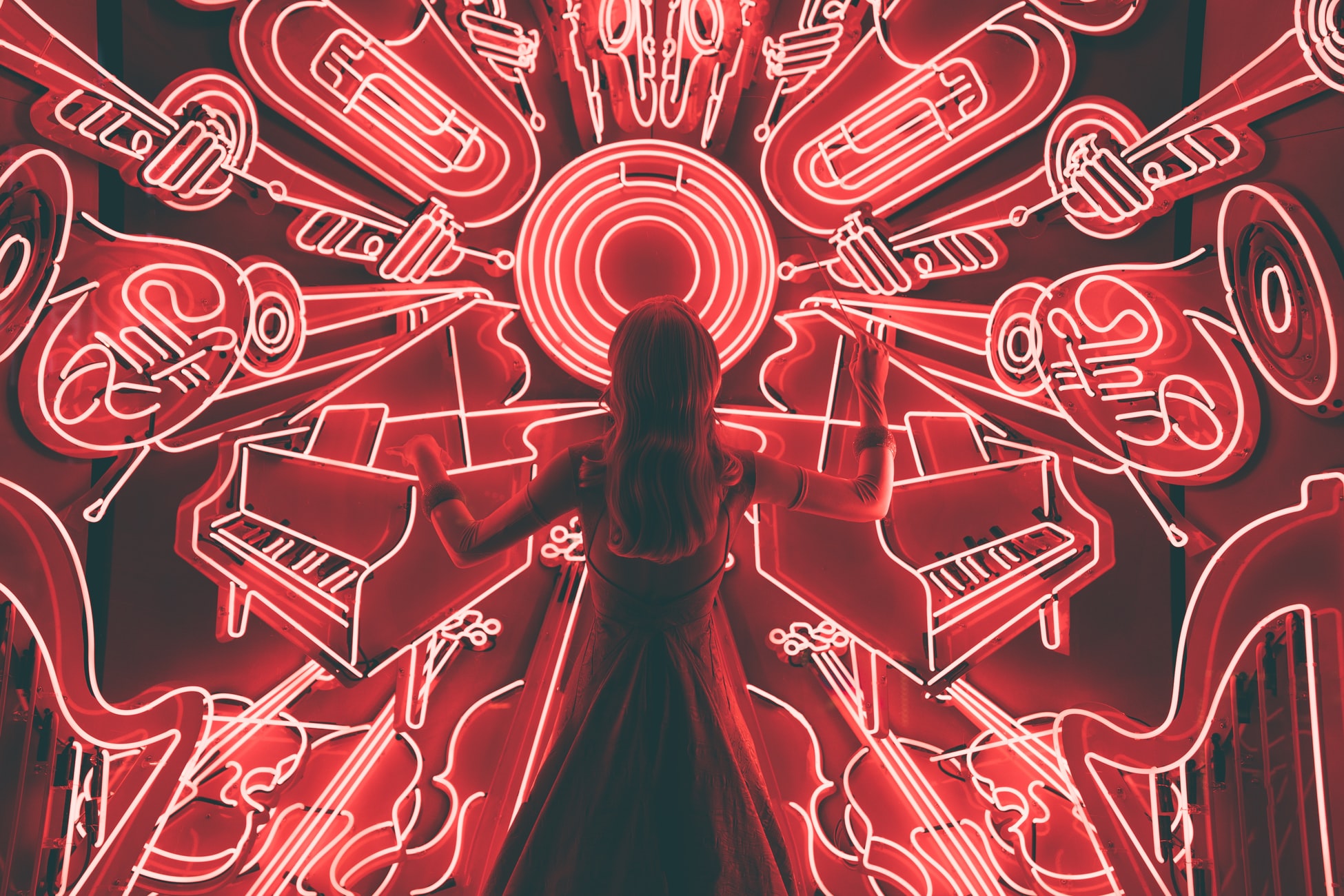The rear speaker placed behind the listener in a surround sound system are also called surround speakers. This is because they’re responsible for a movie or game’s atmosphere and sound effects. With soundtracks mixed for multi-channel surround sound, the rear speakers play back the sounds that set the scene: The indistinct murmur of voices in a large building, the roar of the ocean, the chirping of birds. For this reason, surround speakers are sometimes also called rear effect speakers.
In order to achieve the best effects and most realistic atmosphere, it’s important to observe certain rules when setting up your surround speakers. Note that the ideal configuration will differ from how stereo speakers or soundbars are placed relative to the listening position. Read on to learn more!

Why surround speakers are so important
Imagine a film scene that takes place in a large office. We hear the voices of two co-workers as they talk to each other loud and clear from the centre speaker. We also hear much more: Other voices in the background, the light clicking of fingers moving over keyboards, telephones ringing, coughing. Together, the direct sound of the voices speaking as if to us from the centre and front speakers, and the surround noises, give us a realistic idea of the atmosphere.
A sound system can only produce a truly realistic effect if the noises we hear seem to surround us, not simply radiate towards us from the front. Surround speakers are what make good home cinema sound truly immersive.
Surround speakers: How many does one need and where do they go?
A standard 5.1 surround sound system has two rear speakers. Larger 7.1 systems have four. The addition of two surround speakers creates a more differentiated soundstage and expands the sweet spot. Soundtracks in the sound formats Dolby TrueHD and DTS-HD Master Audio are mixed with these extra channels included.
The ideal placement of surround speakers is equidistant to the listener on either side of and slightly behind the listening position. There should be at least one meter between the listener and the speakers. This symmetry should also be observed with the two additional surround speakers in a 7.1 system. The proper height for surround speakers will vary from system to system. It also depends on the acoustics of the room in which they play. In most cases, however, placement above the head of the seated listener at a height of between 1.4 and 2.1 meters is ideal. This can be achieved by either wall mounting the speakers or placing them on speaker stands.
Surround speakers come in two main varieties
The term “surround speaker” describes the speakers role but says almost nothing about the speaker itself. What kinds of speakers are typically used as rear speakers in a surround sound system? There are two main varieties:
- Direct sound transducers
- Dipoles
Direct sound transducer is a technical name for the most popular type of loudspeaker: The type that disperses sound directly from the front. All standard stereo, Bluetooth and soundbar speakers are direct sound transducers.
Dipole speakers, on the other hand, are a special type of speaker that disperses sound in two directions at once. In praxis, neither side of a dipole speaker will radiate directly towards the listeners. Instead, the sound is directed towards walls so as to reflect and create a diffuse effect that fills the room. This is the opposite of a classic stereo triangle whereby two stereo speakers are angled directly towards the listener.
The backbone of your surround sound system: Rear speakers by Teufel
Teufel Audio offers a wide range of surround sound systems with different speaker combinations and setup options. Depending on your room size and requirements, you can choose from bookshelf speakers, dipoles and wireless solutions as surround speakers:
- The Ultima 40 Surround with Ultima 20 Mk2 bookshelf speakers
- The Cubycon Impaq with compact 2-way satellites
- Theater 6 with dipole speakers
- The RearStation 4 is the perfect solution for those who don’t want to run speaker cable from their AV receiver to surround speakers. It allows for the audio signal to be transmitted wirelessly.
- For those who want an even more immersive and realistic sound, Teufel offers expansion sets for the LT 4 5.1 system and the Columa 300 Mk2 “5.1” system, transforming either set into a full-fledged 7.1 system.
Coda: Surround speakers create a home cinema atmosphere
- Surround speakers are also known as rear speakers and rear effect speakers
- In a home cinema setup, surround speakers are responsible for creating an atmospheric sound
- A 5.1 home cinema system has two surround speakers, a 7.1 system has four
- A natural ambient sound is created when sound from the surround speakers is reflected from walls and ceilings instead of directly dispersed in the direction of the listener
- Surround speakers are usually placed in an elevated position above and just behind the seated listener
- Surround speakers come in two basic forms: Direct sound transducers and dipoles
All pictures: Property of Teufel Audio





Leave a Reply